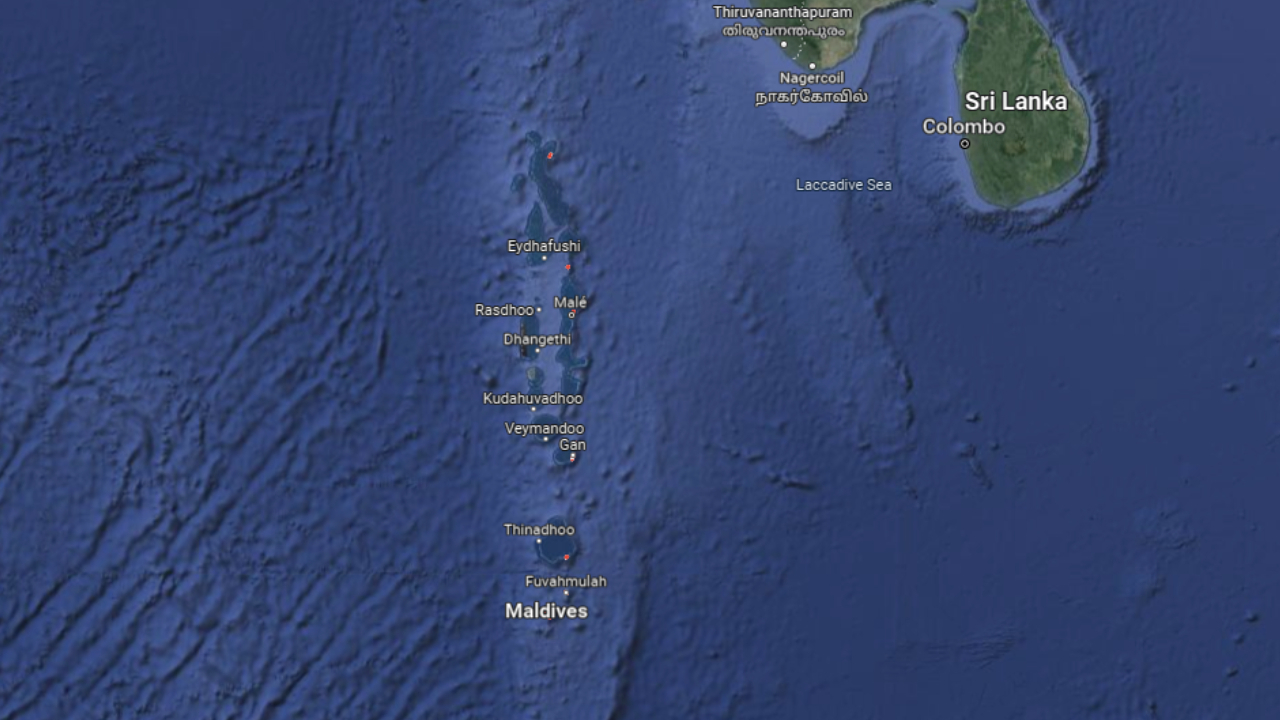Where is Maldives Located?
The Maldives is an archipelago of 26 atolls, situated in the Indian Ocean, southwest of India and Sri Lanka. The islands stretch over 90,000 square kilometers and consist of more than 1,200 coral islands, of which only 200 are inhabited. The Maldives is the lowest country in the world, with an average elevation of only 1.5 meters above sea level.
Distance from India to Maldives
Delhi – 2863 km
Mumbai – 1672 km
Kolkata – 2701 km
Chennai – 1344 km
Bangalore – 1187 km
Hyderabad – 1677 km
Kerala – 861 km
The Maldives in Context
The Maldives is a small country accounting for a population of about 450,000 people. The vast majority of the population comprises Sunni Muslims. The official language of the Maldives is Dhivehi, which is a variant of Sinhalese. English is also widely spoken which is the language of business and tourism. The Maldives is a very popular tourist destination, and tourism is a major contributor to the economy, with a plethora of holiday packages available to cater to the varied interests and budgets of travelers.
The Maldives is a very popular tourist destination recognized for its beautiful beaches and clear blue waters, offering an array of Maldives holiday packages to help visitors make the most of their island getaway. The Maldives is also a popular destination for scuba diving and snorkeling. The Maldives is well-known for its rich marine life where one can find various varieties of fish and coral in the waters around the Maldives. The estimate for tourists reach about 1.5 million each year which is the reason for tourism being the major contributor to the economy of the island nation.
A Brief
Population: 4,50,000
Official Language: Dhivehi
National Food: Gulha
People: Sunni Muslims
History of the Maldives
The Maldives has a long history, and has been inhabited for millennia. The first settlers of Maldives are believed to have arrived from southern India around 2000 BCE. Being a significant trading centre in the ancient time, the nation of Maldives finds its name in the work of the Greek historian Pliny the Elder. In the 12th century, Islam was introduced to the Maldives and the island nation has been an Islamic sultanate since that time. The Maldives became a British protectorate in 1887 before gaining full independence in 1965.
The Geography of the Maldives
The Maldives is an archipelago of 26 atolls, which are spread around an area of over 90,000 square kilometers. The atolls are divided into two groups namely the North Malé Atoll and the South Malé Atoll. The North Malé Atoll is the largest and most highly populated of all and is home to the capital city of Malé, a place famous for its busy markets. On the other hand, the South Malé Atoll is home to Addu City which is the second largest city in the Maldives widely known for its lush greenery. The atolls are low-lying coral islands surrounded by coral reefs that group together to form the Maldives. The highest point in the Maldives reaches to about 2.4 meters above sea level.
The Climate of the Maldives
The Maldives is characterised by a tropical climate, with warm weather year-round. The average temperature stays around 27 degrees Celsius. The rainy season begins in May and ends in November, and the dry season begins in December and ends in April. The Maldives is prone to tropical cyclones usually happening once a year on average, which cause damage to the islands.
The People of the Maldives
The population of the Maldives accounts for around 450,000 people of which the vast majority of the population consists Sunni Muslims. Dhivehi is the official language of the Maldives which is a variant of the Sinhalese language. Another widely spoken language is English which is also the language of business and tourism there.
The Culture of the Maldives
The Maldives has a rich culture highly influenced by a variety of factors including Islam, Hinduism, Buddhism, and the British colonial period. The Maldives is also quite known for its handcrafted lacquerware which pleases tourists from all around the world. It is also known for a long tradition of arts and crafts of which some traditional music and dance are pretty famous.
The Economy of the Maldives
The Maldives’ economy is highly dependent on tourism with it being the main source of foreign exchange earnings. Another crucial source of foreign income is the thriving fishing industry of the Maldives. Work on developing significant sectors like agriculture along with manufacturing is constantly being done by the government.
The Tourism Industry in the Maldives
The Maldives is one of the highly sought tourist paradises which is the reason tourism is a major contributor to the country’s economy. The Maldives includes serene, marvellous beaches, clear blue waters, colourful coral reefs, and a plethora of luxury resorts in the Maldives. Hence, tourism is the primary source of foreign exchange earnings for the economy.
Future prospects for the Maldives
The country of Maldives holds promising prospects for the future. The economy is on the road to diversification, with timely investments in infrastructure and education by the government. The tourism industry has depicted continued growth, and new resorts are being built. The Maldives is also working to attract more foreign investment.
Frequently asked question
Q: What is the speciality of Maldives?
A: Maldives is known for its clear emerald ocean and beautiful luxurious overwater bungalows.
Q: What is the currency used in Maldives
A: The currency used in Maldives is the Maldivian Rufiyaa (MVR)
Q: Is Visa required to travel Maldives?
A: Yes, travel visa is necessary to visit Maldives.


Comment (0)